The Tiger E carried an internal MP40 machine-pistol, typical of Panzers at that time. It was stored in a metal frame inside the turret rear.
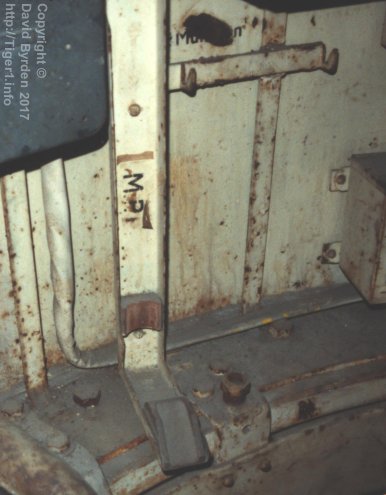
The frame, labelled "MP", was fixed beside the turret's electrical distribution box. The height of the turret inside, from bearing ring to roof, was 66cm. This was just enough that the weapon could be stored vertically.
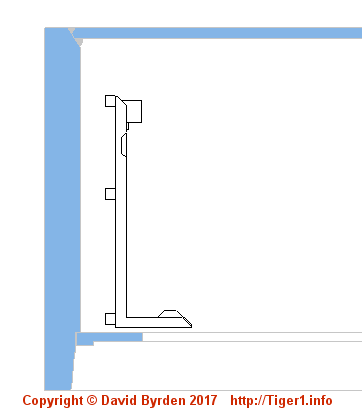
In the original turret layout, this frame was bolted to metal brackets that were welded directly to the turret wall. This sketch shows a profile of that arrangement. It is based on a photograph of a wrecked turret in Tunisia.
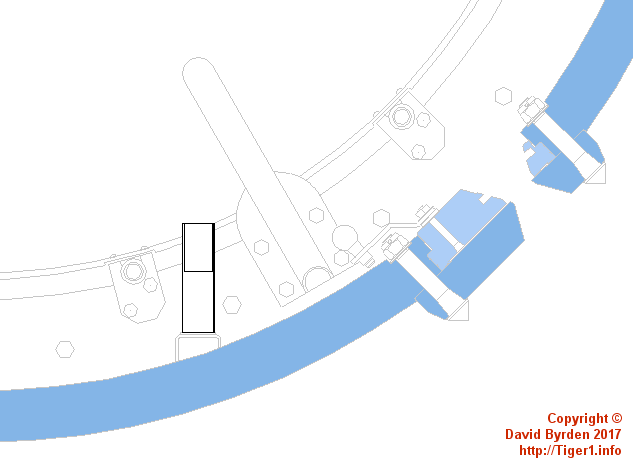
A plan view from above shows that the frame was placed between a waterproofing clamp and one of the fixing bolts in the bearing ring. The frame pointed toward the front of the tank; it was not perpendicular to the wall.
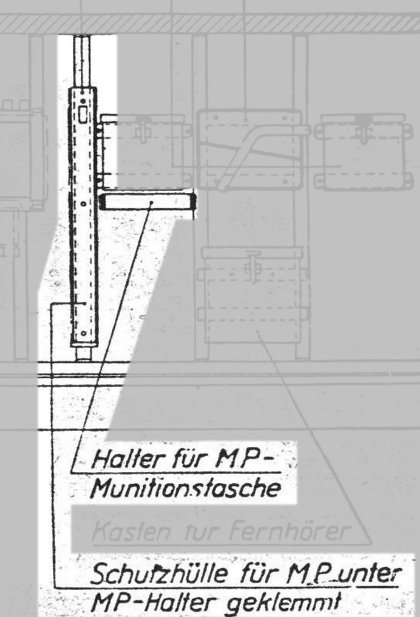
Accessories for the MP40 were stored near it. This is an extract from the "Turret Manual". It points out a rack for an ammunition pouch, visible in the photos already shown. MP40 ammunition pouches had two loops on their back, engaged by two hooks on the rack. The manual also states that the weapon's protective bag (for carrying it in person) was clamped underneath the frame.
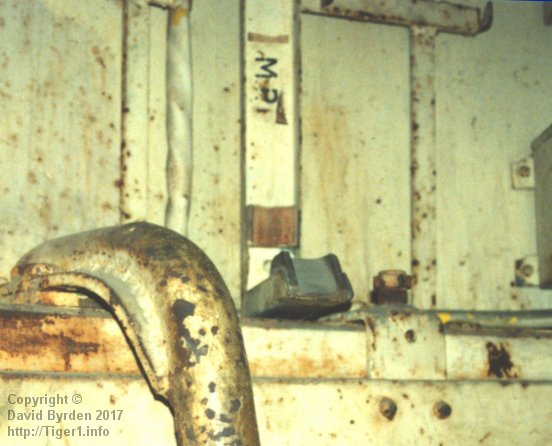
As this photo shows, it was possible to fold the bag and push it under the frame because the frame did not sit directly on the turret ring. There was a gap of about 10mm under it.
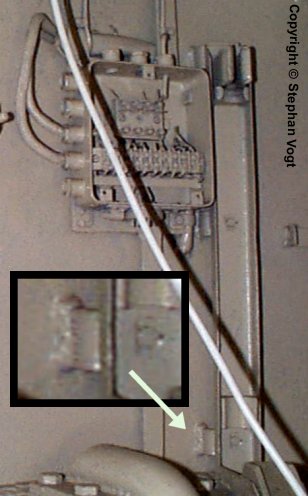
The turret layout was redesigned when only a couple of dozen turrets had been built. The MP40 holder was not affected by the redesign. This photo shows Tiger #250031 which belongs to an American museum. The electrical distribution box is now fixed to long metal strips, but the MP40 frame retains its very short brackets, which proved inadequate for shock protection.
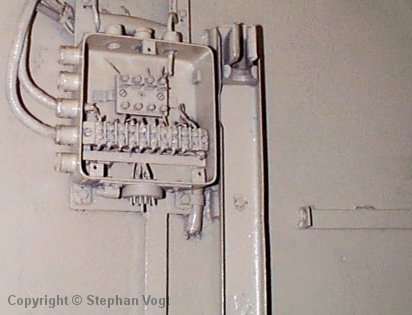
The hooks for the ammunition pouch were still welded to the wall.
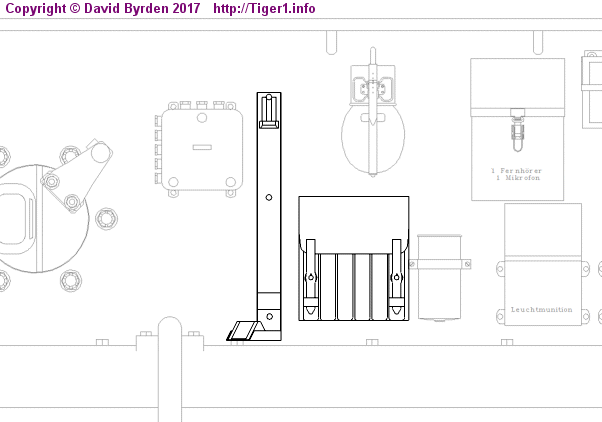
Many items are missing from the American museum Tiger, but this diagram shows how they were arranged on the wall. The MP40 frame and its ammunition pouch are highlit.
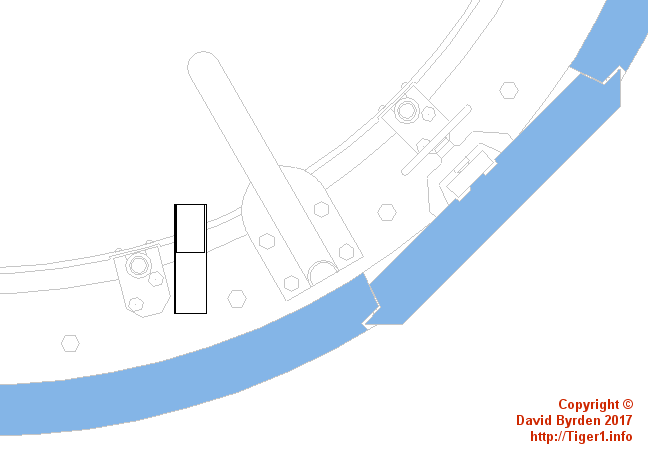
The third turret layout put the MP40 frame on a full-length metal strip. The escape hatch was added to the turret around the same time, fortuitously close to the MP40. The photos from Bovington Museum show this arrangement.
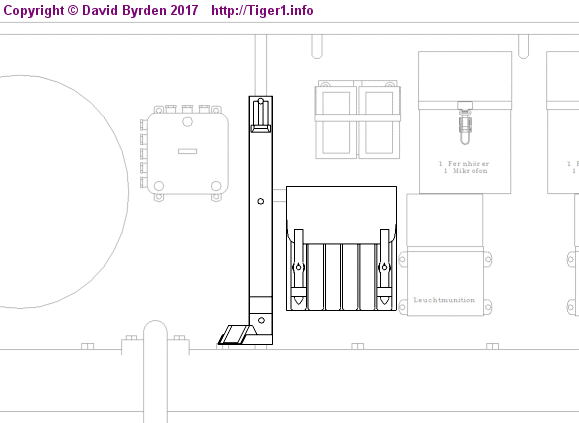
The layout diagram for Tigers of this era is familiar to many because of the Bovington Museum Tiger. But the museum has no ammunition pouch in place; instead they are keeping a fire extinguisher there. This diagram shows how things should be.
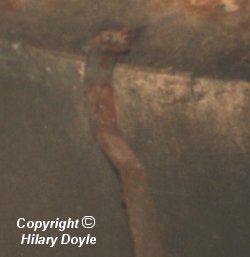
There was a problem with the metal strip; it collided with the aiming ring at the end of the MP40 barrel. This problem was fixed at an unknown time by putting a bend into the top of the strip. The photo is from the Tiger at Saumur Museum.
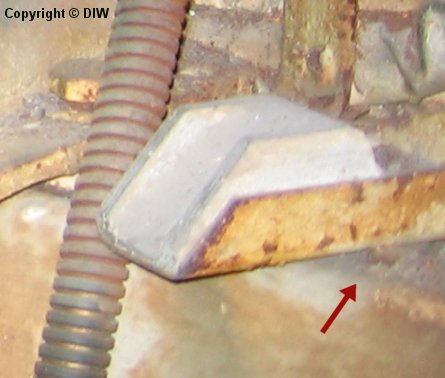
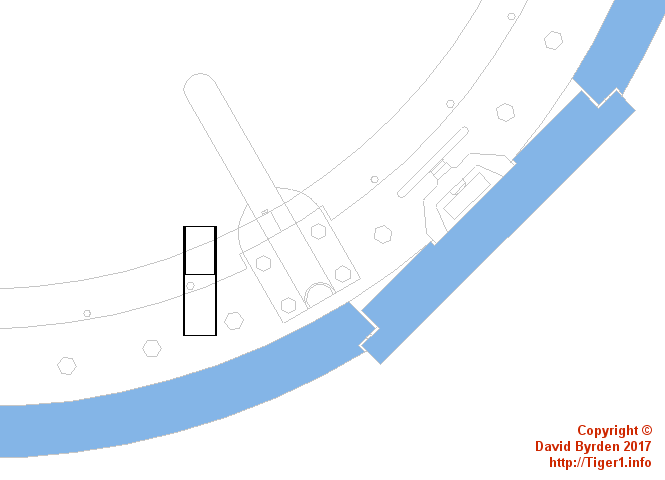
At Tiger 250391, the turret was redesigned and its internal stowage was changed again. A protective cowling was added to the turret ring, and one of its fixing bolts was underneath the MP40 frame. Since the frame was floating 10mm above the ring, there was room for the bolt. This photo shows the "mid" Tiger in Kubinka Museum. The frame itself is unchanged.
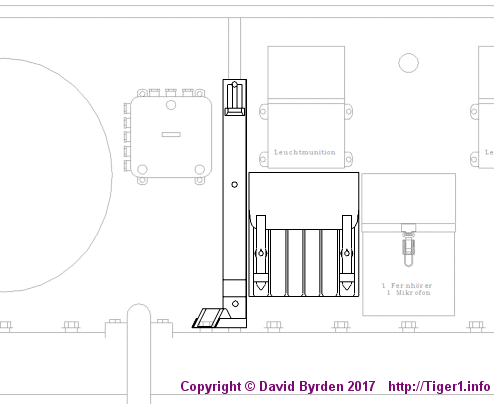
This is the fourth turret layout, in the first "Mid" Tigers. Notice that the items on the wall are closer together than before.
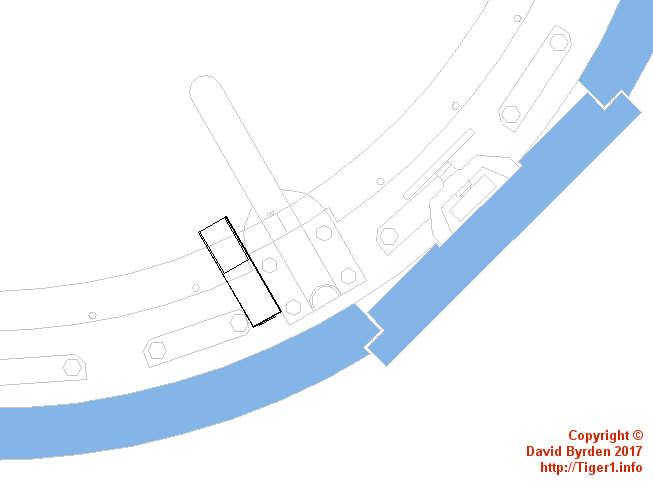
The fifth turret layout removed most items from the walls, but the MP40 remained, being merely moved a little. This diagram shows its position in the latter half of the Tiger's production run. [5] .
[1] Survey of Tiger 250122, at Bovington museum, by David Byrden
[3] Survey of Tiger 250031, by Stephan Vogt
[4] DW to Tiger 1
[5] Survey of vehicle 251114, at Saumur, by Jean-Charles Breucque